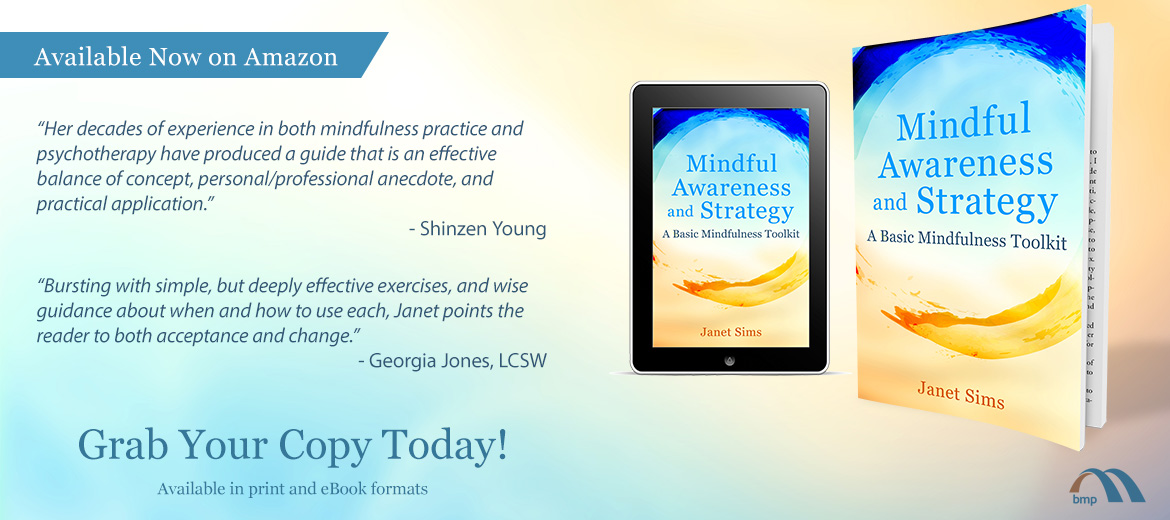Buy the paperback edition or the kindle edition on Amazon now!
Also available locally at New Renaissance bookstore
Are you intimidated by getting started in a mindfulness practice? Would you like to take your meditation practice to a deeper level? Or offer your clients or students a simple, successful approach to achieving greater awareness? Based on her 30+ years as a meditator and psychologist, Dr. Janet Sims skillfully introduces her readers to unique strategies for paying attention in Mindful Awareness and Strategy: A Basic Mindfulness Toolkit.
The Toolkit will provide you with practical exercises for building awareness, strategies for using mindfulness for life challenges like chronic anxiety and fear, and flexible and focused guidelines for choosing effective mindfulness tools for everyday living. Case examples offer unique insights for individuals learning these skills and valuable professional strategies for therapists teaching them to clients. The resulting volume is an invaluable resource for anyone wanting to know how to put mindfulness to practical use.
Starting with just ten minutes of practice a day, the Toolkit offers a fresh, do-it-yourself alternative to programs expecting an up-front commitment of hours or weeks of practice. Using an abbreviated version of the mindful awareness training system of Shinzen Young, this accessible guidebook provides a concise introduction to mindfulness practice and its strategic application to modern life.
Part I presents the “what and why” of the Basic Mindfulness conceptual framework, complete with science-friendly definitions and practical outcomes of mindfulness practice. Part II teaches the “noting technique” and six essential exercises that will help you refine your sensory awareness and connect to your experience moment-to-moment. Part III offers a detailed guide and a two-question protocol for deciding what exercise to use at this particular time with this particular challenge. Part III includes 17 unique case studies illustrating how the exercises might be used in a therapy setting. Part IV empowers readers with advice on establishing a regular meditation practice and finding ongoing support and resources.


